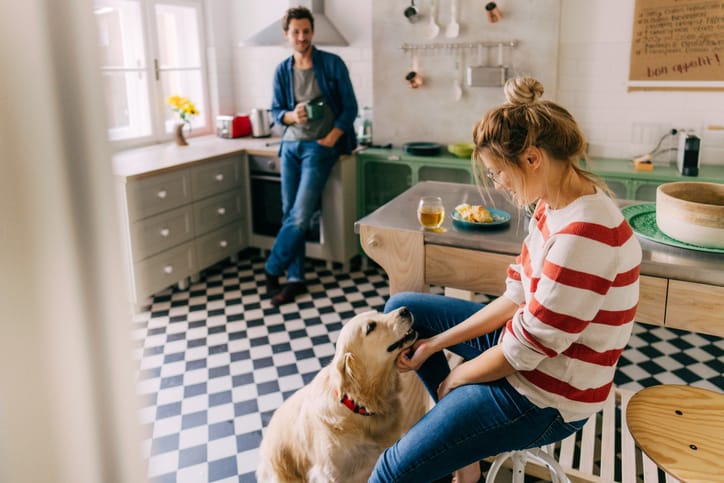Of all the attachment styles, the anxious attachment style can be one of the most destructive. Not only does it keep you in a constant cycle of fear and paranoia, but it also causes you to act out and cause issues in a relationship that don’t really exist. It’s an incredibly damaging way to live and will keep you from experiencing the joy and contentment that accompany a healthy partnership. However, it’s possible to move from an anxious attachment style towards a more secure style if you’re willing to put in the work.
- Develop a keen sense of self-awareness. While simply recognizing that you’re letting your anxiety get the better of you won’t change things, you can reshape your problematic behavior over time by acknowledging the things that send you spiraling so that you can address them. “It’s not uncommon for individuals with this attachment style to constantly worry about their relationships, fearing abandonment and seeking constant validation,” explains Sophie Cress, LMFT, CGT. “One of the first steps I recommend is self-awareness – recognizing the patterns and triggers of this anxiety. For example, I’ve had clients who shared how they feel intense anxiety when their partner doesn’t respond to a text message promptly.”
- Boost your self-esteem and self-worth. It’s likely that your anxious attachment style accompanies a terrible sense of self-worth and a lack of self-esteem, and it’s time to change that. It’s important that you learn to appreciate everything you bring to the table and that you believe that you are truly good enough and that you deserve good things. Try daily self-worth affirmations in the mirror every day. Celebrate all the wonderful things about yourself and accept the things you don’t as simply part of being human. The more you begin to love yourself, the more you’ll believe you’re worthy of love from others.
- Communicate honestly with your partner. While it’s not their responsibility to assuage your anxieties (particularly when they’re unfounded), your partner will be more able to understand where you’re coming from and what drives certain attitudes and behaviors if they know what you’re experiencing. Not only that, but it will help put you at ease, too. “I’ve seen how important it is for clients to openly and honestly share their fears and insecurities with their partners. This can be a challenging step, but it’s essential for building trust and understanding,” Cress says. “For instance, I recall a client who had been in a long-term relationship but had never expressed their deep-seated fear of abandonment. When they finally mustered the courage to have an open conversation with their partner, it led to a profound shift in their relationship dynamics.”
- Add mindfulness techniques to your daily routine. While these may seem ineffective at first, incorporating them into your daily life can have a huge effect over time. “Try to add some mindfulness and relaxation techniques, such as meditation, deep breathing, or even journaling,” suggests psychology expert and life coach Bayu Prihandito. “These practices will help you understand better your thought patterns, emotions, and manage your anxiety more effectively. This, in return, will create a sense of security and confidence within yourself and reduce your dependency on external validation.”
- Learn to sit with your discomfort. As upsetting as it can be when you have an anxious attachment style, a willingness to be present and truly allow yourself to experience the unsettling emotions can ultimately help you work through them. “A great tool to move through the pain of panic for an anxious attachment styled-client is to turn the phone/iPad/computer off, and sit with the discomfort. It is through facing our fears that we overcome them,” suggests clinical psychologist Dr. Nancy Irwin, PsyD, C.Ht. “Sitting with it looks different for each person, but it can be to journal out the feelings and fears, writing out what the worst possible scenario could be and what that would mean about you, or getting a massage, or going for a run or swim or biking, take a dance class, play the piano or guitar, etc.”
- Try cognitive restructuring. This practice doesn’t invalidate the worries and fears that accompany an anxious attachment style but instead pushes you to reframe them in order to become more secure. As Cress says, this puts you in a more positive state of mind. “Cognitive restructuring, a technique I often employ, helps clients challenge and reframe negative thoughts,” she tells Bolde. “When clients catastrophize or assume the worst, I encourage them to ask themselves if those thoughts are based on evidence or assumptions. This process helps replace negative thoughts with more balanced ones, reducing anxiety.”
- Work with a professional therapist to get to the root of your anxious attachment style. Our attachment styles are formed very early on in life and are based on our childhood experiences. If you have an anxious attachment style, you may have experienced abandonment or neglect, whether physically, emotionally, or socially, as a child and that is rearing its ugly head in your adult life. Working with a licensed mental health professional to dig into the experiences you had will allow you to work through them and emerge with a much healthier perspective. “Recognizing these patterns is the first step towards change, and therapy, both individual and couples counseling, can provide invaluable insights and coping strategies,” says psychotherapist Tyler J. Jensen, MS, LCMHC, LMHC, NCC. “Open communication with partners, where feelings, insecurities, and needs are transparently shared, is crucial in breaking the cycle of emotional highs and lows.”



